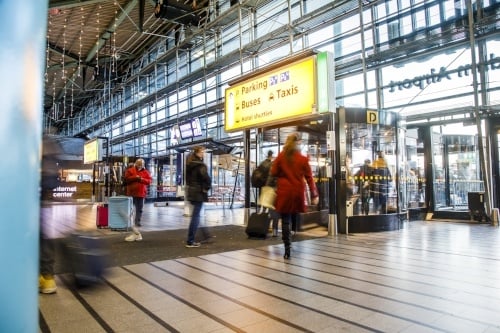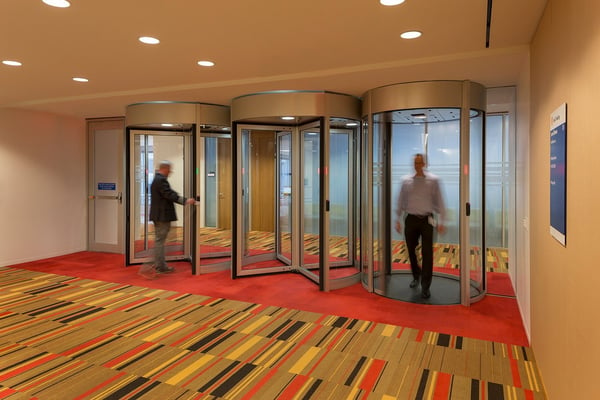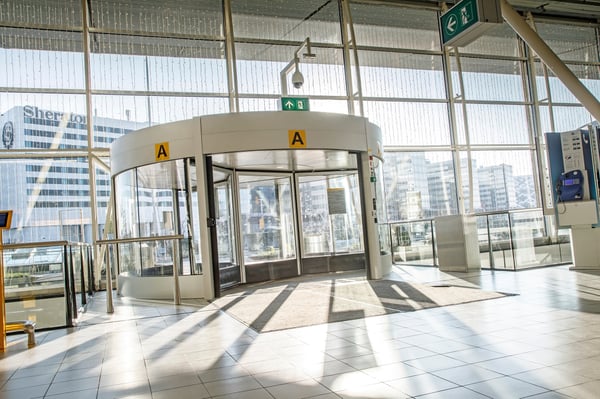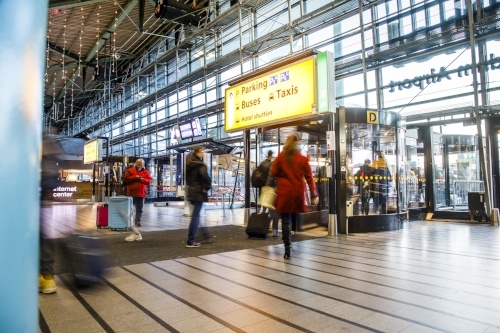Airports have undoubtedly become high-risk environments that are routinely regulated by national and international legislation. Over time, the threat to global travel has increased, meaning that the likelihood of violations regarding international travel has become highly likely. Therefore, the need to build a flexible solution weighs heavily on those whose role it is to assess and evaluate the internal safety of an airport while still continuously addressing the needs of passengers, airport visitors and employees alike.
Access solutions within airports should meet the individual requirements of all zones which are expected to contribute to the overall safety of the entire building. With this in mind, security solutions need to be reliable with a long lifespan and, have the ability to be fully compatible with the existing access control systems. Systems should have the capabilities to deter, detect and monitor users with tailorable enhancements. Not to forget that access for both landside and airside should allow for the functional movement of large groups of people, baggage and emergency release capability to help with panic control.
Multi-Level Access Control at Every Checkpoint
Entering and Exiting Airport Terminals Landside
All airports have a secure and none-secure side, also known respectively as airside and landside. Revolving doors situated landside should have the flexibility to address the many challenges that airports face regarding peaks and lows of traffic. High-capacity revolving doors allow for comfortable throughput in and out of the main terminal while still making allowance for comfortable movement with trollies, suitcases and wheelchairs. There are an array of multi-purpose and versatile revolving doors with some even being manufactured to transform into a standard sliding door set. This configuration enables users to walk through at a faster pace - helping to alleviate frustrating and potentially costly congestion.

Variety of Entry Solution for Each Person and Place
There are individual journeys within the airport segment which have to be uniquely considered with regards to employees, passengers and visitors, all of which require multiple methods of entry and exit into the same building from an array of various points and permitted access permissions. Airside entry for passengers can only be through the high-security set up located at passport control. This means that staff who work airside must have another means of entering and exiting secure areas which still encompass all the security identification needed to reassure zero security breaches within the airport segment.
Employee-Only Airport Airside Access
Where there is a requirement for absolute control to allow for access to private areas, secured entry is a necessity. High-security doors and portals are a popular choice for staff entrances within airports, as they provide full anti-tailgating and anti-piggybacking functionality. The specification of design tends to incorporate finishes and glass types to dissuade public access attempts by blending designs in with the surroundings. As technology grows, the need for up-to-date integration increases, which is why high-security entrance specifications almost always include the need for seamless integration with existing access control systems.

Airport Lounges and Interlinking Hotels
Terminals can be busy, confined and stressful environments which is why many travelers opt for private lounges, usually at a pre-paid cost. Exclusive waiting areas offer guests guaranteed seating, charging ports, beverages and manned desks. Optical turnstiles are often utilized at a medium level of security to discourage unauthorized access in these instances rather than prevent. They offer a stylish alternative to roping and bar sectioning. Optical turnstiles can address many challenges, such as identifying and alarming the manned desk of those who have not gained permission to enter the private area and, in a variety of styles from full-height barriers to completely open.

Over the past 20 years, airports have expanded extensively, with interlinking hotels, restaurants and public transport links. The need to have access accommodation and travel at leisure has become the standard expectation of commuters. With flight times being 24 hours a day, the luxury of staying on-site is an option that many chose. Interlinking hotels, like that of atriums and building receptions, often specify for optical turnstiles to help prevent any unauthorized access to the hotel floors directly from the main airport terminal.
Outdoor and Mid-Zone Areas
The benefit of a revolving door is the ‘always open always closed’ concept which means that weather conditions and climates should not affect the building temperature. Where there is an issue of mediating indoor temperature conditions, revolving doors naturally are installed. The same is true for mid-zone smoking areas within airports. Small revolving doors are often used for these entrances as they ensure that smell and litter from these areas do not pass through into the terminal.


